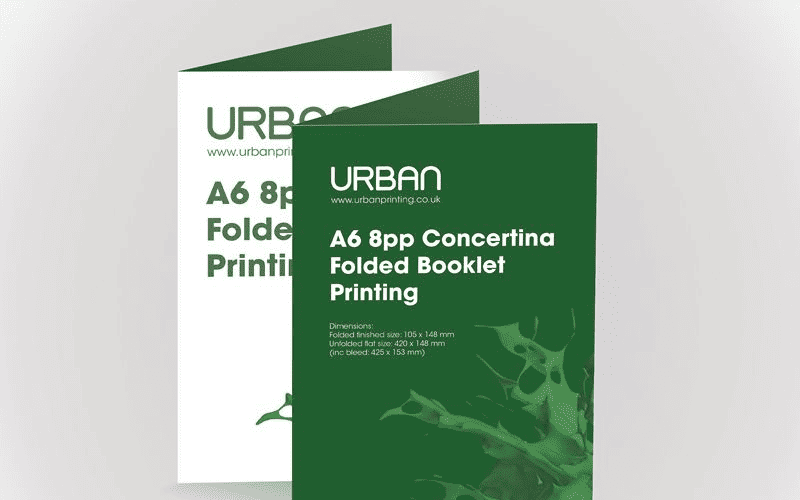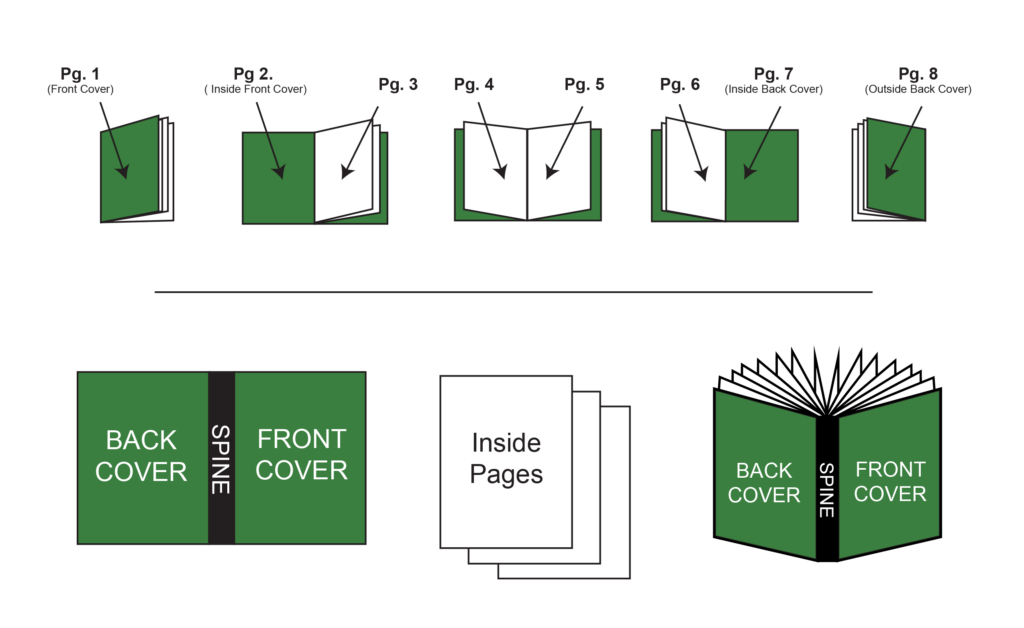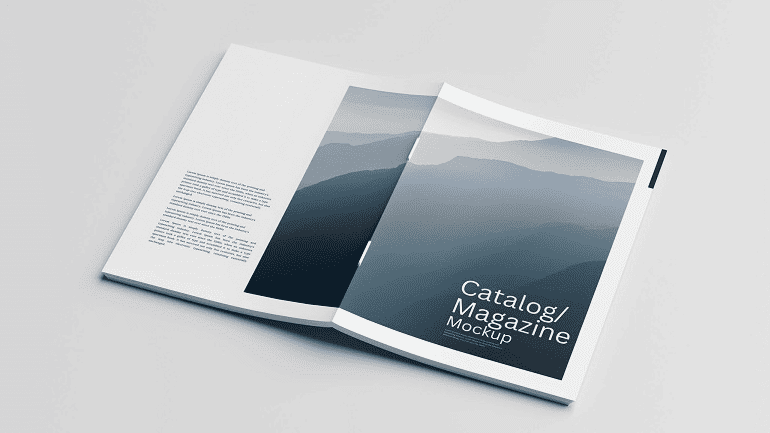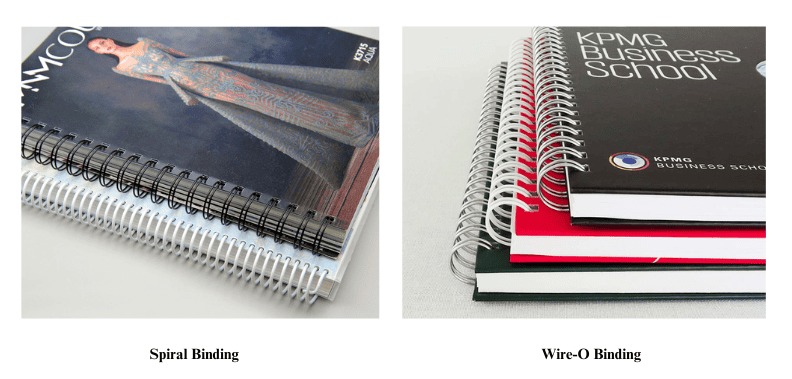Last Updated on July 21, 2023 by Packoi Team
In an article published on Science News Explores, it’s revealed that comprehension is better when something is read in print instead of digital.

This is why businesses shouldn’t ignore the power of printed marketing tools. Investing in a booklet printing project will still give incredible rewards – as long as you know how to do it properly. Even something as trivial as arranging the pages for booklet printing will matter in making your printed materials successful.
In this article, the focus will be on the pages of your booklet. You’ll get a deeper understanding of how you should arrange it so you can plan the content structure properly.
The Typical Order of Booklet Pages
Let’s go back to the basics before you arrange pages for booklet printing. While a booklet’s pages aren’t as much as a regular book, you still have to deal with several ones. The multiple pages will have to be arranged in a specific way to ensure that the content flows according to how you planned it.
A typical arrangement of booklet pages is as follows:
- The front or preliminary matter (e.g. title page, foreword, etc)
- The main matter (the main narrative)
- The back or end matter (e.g. glossary, appendix, sources, etc)
It seems simple enough but once you factor in the multiples of four rules in page counts and the different binding methods – everything starts to get confusing. Don’t worry, you’ll understand these concepts better as you go along in this article.
The important thing is to realize that the page count on the pdf document you’ll send to the printer isn’t the same as what your readers will see in the final output. For instance, the page counts in the pdf file for the printer would include the front matter. But the actual page numbers are only applied to the main matter.
As for the multiples of four rule in pages, think of one large sheet of paper. Printing companies usually fold this in half and each half represents a page. If you consider both sides of the paper, you get 4 pages in all.

Not only that, you have to remember that the general rule in numbering pages is that the recto (right-hand page) has the odd number while the verso (left-hand page) has the even number. It’s not set in stone but following this rule will keep you from getting confused as you set the pages of your booklet.
2 Ways to Arrange Pages for Booklet Printing
The reading experience is the most important thing to remember when you arrange pages before printing booklets. You have to impress the readers and make them want to read your booklet from cover to cover.
This isn’t just about the arrangement of the page numbers. It’s about the seamless flow of content and how it takes the reader from one page to the next.
But here’s the confusing part. The way that a printing company will look at the page numbers isn’t the same as what readers will see. This is why beyond the booklet page count, you have to choose the right arrangement of pages for the booklet printing company. That way, the printer will know how the booklet should be printed so it appears exactly how you want readers to see it.
To guide you, here are two common ways to arrange booklet pages.
Reader’s Spreads

Also known as the numerical order, the reader spreads and arranges the pages for booklet printing according to how the reader will see them. So page 1 is followed by page 2, then 3, 4, and so on.
The benefit of using the reader spreads is it allows you to maintain the sequence of the content. It avoids confusion since it’s easier to follow.
However, there are drawbacks to using this as the arrangement of pages for booklet printing. First of all, this might lead to more blank pages to accommodate the necessary page count requirement of printing (e.g. 4-page rule). You’ll also have to be careful with two-page spreads or fold-outs. Use pagination to ensure the finished booklet will have the same page arrangement as you planned.
Printer Spreads
Just as the reader spreads show the pages as the reader will see them, the printer spreads show how the pages will look as they are printed on the sheets of paper. You can say that this favors the printing company because it’s optimized for their printing machines.
The printer spreads and arranges pages based on how they’ll be printed, folded, and eventually bound. So right beside page 1 could be page 8. Then page 2 would have page 7 beside it, and so on.

This is great for commercial printing, especially for booklets with multiple pages. It minimizes paper waste and unnecessary blank pages. It also ensures that when the sheets are folded and bound, the page sequencing is correct.
This option makes it easy to align for two-page spreads. But it can be confusing if you’re not careful.
Page Count Based on Binding Type
The page count plays an important role in the final output of your booklet. Before you can arrange pages for booklet printing, you have to know the page count first.
But to do that, you also have to determine the binding method that you’ll use. The page count affects the thickness of the booklet. Some binding methods can only accommodate a number of pages so make sure you get to know your options first.
Here are 4 binding methods that are commonly used for booklet printing.
Saddle Stitching
This is one of the cost-efficient ways to bind booklets. But it’s ideal for those with fewer pages (up to 64 pages).

A saddle-stitched booklet is printed on sheets and then folded in half before they are stapled together. For this binding method, the rule of multiples of 4 applies. So if your booklet only has 14 pages, 2 pages will be left blank to complete the needed 16 pages.
Make sure to consider the front and back covers when you count the pages for your saddle-stitched booklet.
The ideal page arrangement for this is the printer spreads.
Perfect Binding
This type of binding method is ideal for printed materials with 40 pages or more – like the typical paperback book. It can go up to hundreds of pages.
This method involves printing on both sides of a sheet of paper. Then the printed sheets are put together by applying adhesive to the spine.
The ideal page arrangement here is the numerical or reader spreads.
Spiral Binding
Also referred to as coil binding, this involves sheets of paper with prints in front and at the back. The pages are stacked together so holes can be punched along the side. A coil is then inserted through the holes to put them all together. This is why space must be provided for the holes at the side. Consider this together with the bleed and margin of the pages.
This method is ideal for all types of page counts – making it perfect for both booklets and books. The arrangement of the pages can also follow the numerical order.

Wire-O Binding
This is just the same as the spiral binding but instead of a coil, you use O-shaped wires. It’s ideal for paper with print on both sides and the arrangement for this binding method is reader spreads.
For this option, there’s an 8-page minimum. The maximum thickness is around 1 ¼” thick. Make sure there’s space at the edge for the holes to be punched.
6 Reminders When Setting the Page Count for Booklet Printing
As you finalize the booklet pages before printing, there are a couple of things that you need to consider for the page count. This is crucial because it’ll ensure that the printed output will be according to what you planned.
Here are 6 reminders that you shouldn’t ignore.
Consider the Content Structure
When it comes to the page count, it’s always best to start with the content structure. Think about the sections, chapters, and different topics that you’ll put in the booklet. This will define how many pages you’ll need, the binding method you’ll use, and the overall print settings that your booklet will require.
Choose the Type of Spread You’ll Use
As mentioned, you have two options. The reader spreads focuses on how the order by which the reader will see the pages. The printer spreads focus on how the pages are arranged to be printed.
No matter what spread you’ll choose, it has to end up giving the best reading experience to your readers.
Pick the Right Binding Method

Once you’ve finalized the page numbers, you can choose the binding method for your booklet. Since you won’t require a lot of pages, you might be better off using the saddle stitch binding method. It’s cost-efficient and the most commonly used for booklets.
But whatever you choose, make sure the binding method compliments the contents of your booklet. Every page, specifically double-page spreads should be aligned with each other.
Check the Pagination
Check all the page numbers to ensure they follow the right pagination. Look at the content and see how it flows from one page to the next. You want the reader to have a smooth-flowing experience as they read the booklet.
If you’re using the printer spreads, the interior page count may not appear the same as the print-ready pdf file. Make sure the final booklet is in the correct numerical order so it won’t confuse both the printer and the reader.
Don’t Forget the Cover Pages
Only the interior pages of your booklet will be numbered when the reader gets their hands on it. But before it’s printed, the page count will have to include the front and back covers. Apart from the booklet cover, any blank pages, table of content, and index pages will also be numbered. Don’t leave them out when you send the pdf file of the booklet to the printers.

Print and Examine the Test Copy
Once you have the final page layout, get a test copy and examine it. Pretend you’re the reader and see if it will give you a great reading experience.
Review the content, layout, and overall appearance like the colors, images, etc. Adjust when necessary and inform the printer of any issues that you think might be a problem once the mass printing commences.
Do You Need Help Finalizing the Pages of Your Booklet? Packoi Printing Is Ready to Assist.
The right page arrangement is a crucial step that you have to complete before printing booklets. You want to make sure that the content and message in your booklet will be delivered the right way.
Don’t try to rush through the process because you might end up mixing the printed sheets. That could incur unnecessary expenses and could lead to disappointed readers.
If you want to ensure that your booklet will come out looking great, choose the right printing company to partner with.
Packoi Printing has been printing booklets, catalogs, brochures, and other printed materials for years. We can guide you through the whole process so you can have a successful booklet printing project.
Give us a call to talk about your plans. We can give you a fair quotation for your order in no time.




